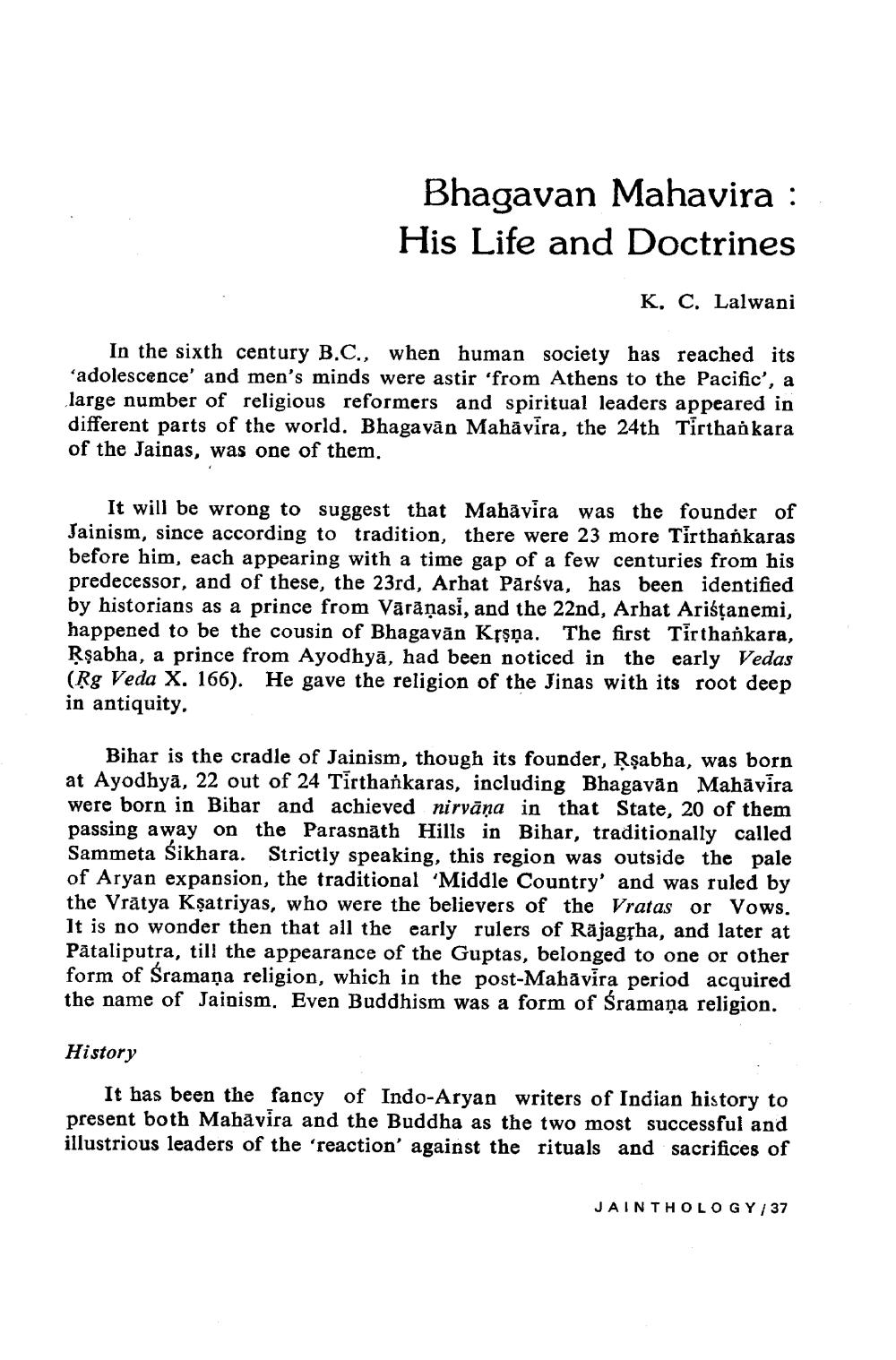________________
Bhagavan Mahavira : His Life and Doctrines
K, C. Lalwani
In the sixth century B.C., when human society has reached its 'adolescence' and men's minds were astir 'from Athens to the Pacific', a large number of religious reformers and spiritual leaders appeared in different parts of the world. Bhagavān Mahävira, the 24th Tirthankara of the Jainas, was one of them.
It will be wrong to suggest that Mahavira was the founder of Jainism, since according to tradition, there were 23 more Tirthankaras before him, each appearing with a time gap of a few centuries from his predecessor, and of these, the 23rd, Arbat Pārsva, has been identified by historians as a prince from Vārāṇasi, and the 22nd, Arhat Aristanemi, happened to be the cousin of Bhagavān Krşņa. The first Tirthařkara, Rşabha, a prince from Ayodhyā, had been noticed in the early Vedas (Rg Veda X. 166). He gave the religion of the Jinas with its root deep in antiquity.
Bihar is the cradle of Jainism, though its founder, Rşabha, was born at Ayodhya, 22 out of 24 Tirthankaras, including Bhagavān Mahāvir were born in Bibar and achieved nirvāņa in that State, 20 of them passing away on the Parasnath Hills in Bihar, traditionally called Sammeta śikhara. Strictly speaking, this region was outside the pale of Aryan expansion, the traditional Middle Country' and was ruled by the Vrātya Ksatriyas, who were the believers of the Vratas or Vows. It is no wonder then that all the early rulers of Rājagsha, and later at Pātaliputra, till the appearance of the Guptas, belonged to one or other form of Sramaņa religion, which in the post-Mahavira period acquired the name of Jainism. Even Buddhism was a form of Śramaņa religion.
History
It has been the fancy of Indo-Aryan writers of Indian history to present both Mahavira and the Buddha as the two most successful and illustrious leaders of the 'reaction' against the rituals and sacrifices of
JAINTHOLOGY/ 37




